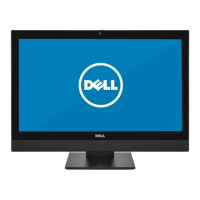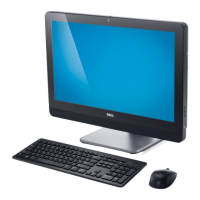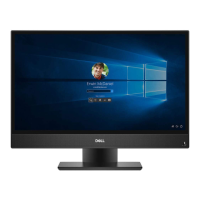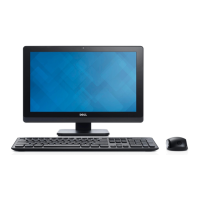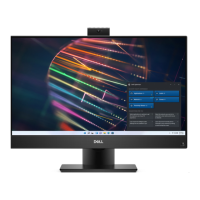operation will not complete until all the drives in the RAID volume have completed the request to commit the data. This kind of
IO operation completely negates any advantage of a higher performing drive in the volume.
Care must be taken to match not only the drive vendor, capacity, and class, but also the specific model. Drives from the same
vendor, with the same capacity, and even within the same class, can have very different performance characteristics for certain
types of IO operations. Thus, matching by model ensures that the RAID volumes is comprised of an homogeneous array of drives
that will deliver all the benefits of a RAID volume without incurring the additional penalties when one or more drives in the
volume are lower performing.
Media-card reader
The following table lists the media cards supported by your OptiPlex 7400 All-in-One.
Table 14. Media-card reader specifications
Description Values
Media-card type
One Secure Digital (SD) 4.0 card
Media-cards supported
● Secure Digital High Capacity (SDHC)
● Secure Digital Extended Capacity (SDXC)
● Secure Digital (SD) 4.0
● SD UHS-I (UHS104)
● SD UHS-II
NOTE: The maximum capacity supported by the media-card reader varies depending on the standard of the media card
installed in your computer.
Camera
The following table lists the camera specifications of your OptiPlex 7400 All-in-One.
Table 15. Full HD RGB Infrared Webcam
Description Values
Number of cameras
One
Camera type
FHD RGB camera/Infrared camera
Camera location
Front pop-up camera
Camera sensor type
CMOS sensor technology
Focus detail
● Fixed focus
● Focus area—23 cm ~ Infinity
Camera resolution:
Still image
2.07 megapixels
Video
1920 x 1080 (FHD) at 30 fps
Infrared camera resolution:
Still image
0.30 megapixels
Video
640 x 480 (VGA) at 30 fps
Diagonal viewing angle:
26 Specifications of OptiPlex 7400 All-in-One

